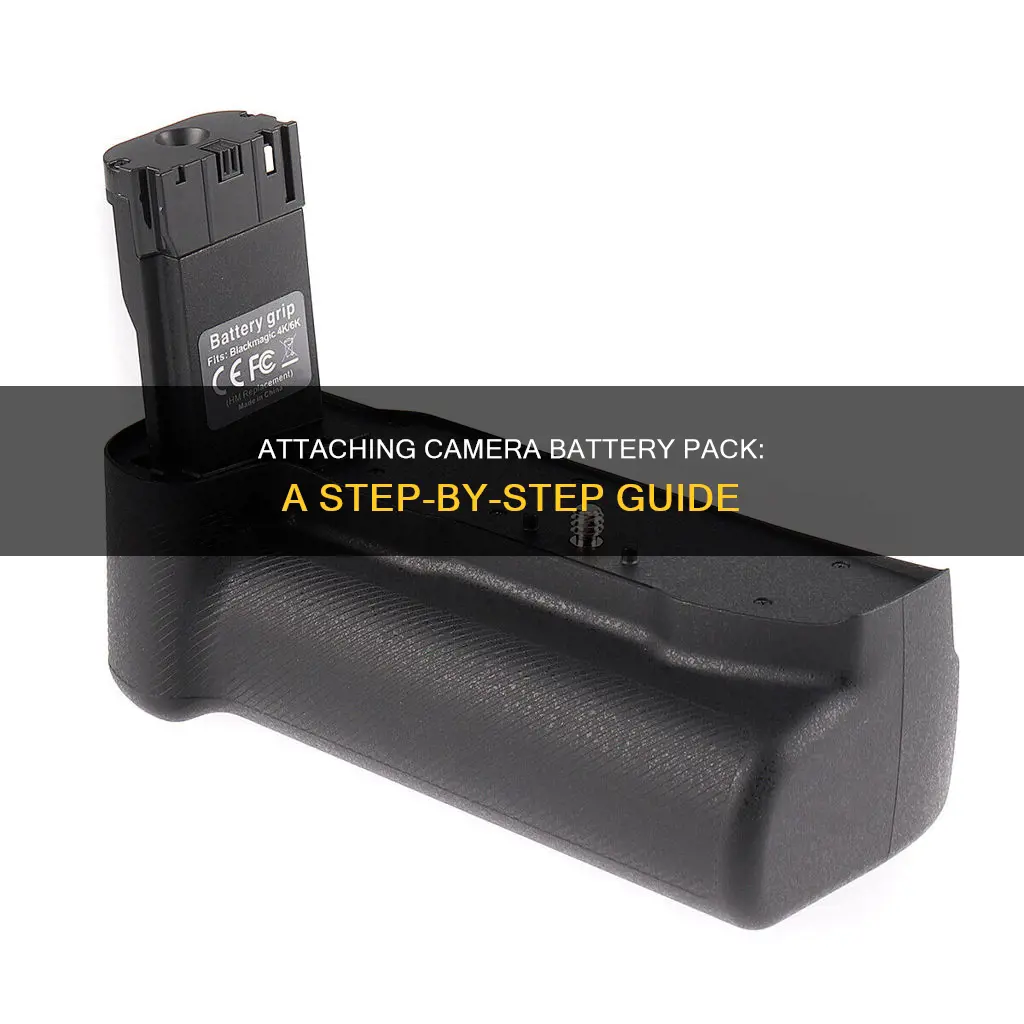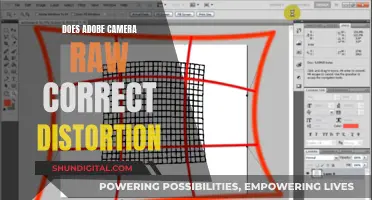
There are many different types of camera battery cases and pouches available on the market, with various attachment methods depending on your needs. Some cases can be attached to your camera strap with a loop, wire ties, or touch fasteners, while others are designed to be hung on your belt or stored in your backpack. When choosing a camera battery case, it is important to consider the size and type of your camera battery, as well as the level of protection and accessibility you require.
| Characteristics | Values |
|---|---|
| Attachment Type | Loop attachment that slides onto a camera strap or belt |
| Closure Type | Touch-fastened, hook and loop, zipper, magnetic |
| Protection | Dustproof, waterproof, wear-resistant, cushioning |
| Compatibility | LP-E6, LP-E17, NP-F550, FW50, FZ100, W126S, and more |
| Storage | 2-8 batteries, SD/CF/TF cards, cables, adapters, chargers |
| Material | Nylon, PVC, neoprene, polyester, ballistic nylon |
What You'll Learn

Using nylon wire ties
Firstly, find a suitable camera case or pouch that can accommodate your camera battery pack. It is recommended to choose a case with small gussets behind the zipper to prevent the camera from falling out when the pouch is opened. Plan to mount the case in a vertical orientation as a top loader.
Next, determine the optimal position for mounting the case on the rucksack. Consider factors such as ease of access and comfort while moving your arm during skiing motions. The medium height to a slightly higher position on the left strap is often ergonomic for right-handed individuals. Ensure that the wire ties do not cause discomfort, and cover them with duct tape if necessary to prevent chafing.
Now, it's time to attach the case to the rucksack. Start by melting holes through the nylon of the rucksack strap using a reversed drill bit heated on a kitchen stove. The top holes should go through the strap for stability, while the bottom holes only need to be burned into the camera bag. Be careful not to burn yourself during this process.
Thread the nylon wire ties through the holes, ensuring that the latch on the ties is as protected and hidden as possible. After threading, cut off any excess wire and smooth the sharp edges of the wire tie latch with sandpaper. High-quality wire ties from hardware stores are recommended to avoid snapping in cold temperatures.
As an optional precaution, if you anticipate encountering extremely cold conditions, consider threading a small cord through the same holes as the wire ties for added insurance.
With these steps, you can securely attach your camera battery pack case to your ski touring rucksack using nylon wire ties, providing easy access to your camera equipment during your adventures.
LG X Camera Specs: X Charge Edition
You may want to see also

Loop attachment on a belt or camera strap
The OP/TECH USA Battery Holster is a compact case for SLR batteries, AA batteries, and other accessories. The soft, durable neoprene pouch slides onto your camera strap or belt and is held securely in place with a touch fastener. The pouch is protected from dust, moisture, and impact. The loop attachment easily slides onto a camera strap or belt.
The USA Gear Small Digital Camera Case is a compact camera soft case with a belt loop, scratch-resistant interior, and a carabiner clip. The case is made of flexible neoprene, which conforms to your device's dimensions and protects your camera from daily wear and tear. The hook-and-loop access flap allows you to easily access your camera. The belt loop on the back of the case makes it easy to attach directly to your waist for convenient access to both the case and your camera.
Charging Camera Batteries: Using the Right Charger
You may want to see also

Hook and loop fastener design
Hook-and-loop fasteners, commonly known as Velcro, are a convenient way to attach a camera battery pack case to your camera strap or belt. This method ensures that your extra battery is easily accessible and secure, so you don't miss a shot due to a weak battery. Here is a guide on how to design and attach a hook-and-loop fastener for your camera battery pack case:
Step 1: Choosing the Right Hook-and-Loop Fastener
When selecting a hook-and-loop fastener, you have the option of using Velcro or a generic brand. Consider the softness of the loop part and whether you prefer it on the lens cap or the camera strap. Placing the loop part on the strap can make it feel more natural and prevent the sharp hooks from catching on your clothes. However, this may cause the hook on the lens cap to get caught in the fabric of your lens or camera case.
Step 2: Attaching the Fastener to the Camera Strap
Cut a piece of the fastener that fits your camera strap, slightly rounding the edges. Sew it onto the strap, preferably on the left side, to avoid interfering with camera controls. If you chose the loop side for the strap, cut a small piece of the opposing fastener (hook side) with rounded edges. This will ensure that it doesn't stick too strongly to the camera strap.
Step 3: Attaching the Fastener to the Battery Pack Case
Before attaching the fastener to the battery pack case, move all optics away to avoid any damage from the superglue. Cut a piece of the opposing fastener (loop side) that matches the size of the battery pack case. Carefully glue the fastener to the case and let it dry thoroughly before putting it on the lens.
Step 4: Attaching the Battery Pack Case to the Camera Strap
Once the glue on the battery pack case is completely dry, you can attach it to the camera strap. Simply lift the hook-and-loop fastener, thread the strap through the opening, and secure it in place. Now you have easy access to your extra battery whenever you need it!
Additional Tips:
- Consider the size of the hook-and-loop fastener to ensure it fits your camera strap and battery pack case.
- You can also use elastic straps with hook-and-loop fasteners to secure your camera battery and other accessories in your camera bag.
- For added convenience, look for battery pack cases with a touch closure or a full-flap closure for quick and easy access.
Charging the Bdpower Wi-Fi Camera: A Step-by-Step Guide
You may want to see also

Zipper design
- Choose a compact and lightweight camera battery case that features a zipper design. Look for a case that can accommodate multiple batteries and memory cards. For example, some cases have four storage pockets, allowing you to carry a combination of camera and AA batteries, as well as memory cards.
- Ensure the case has a protective material construction, such as PVC, to safeguard your batteries and memory cards from dust, scratches, and damage.
- Attach the case to your belt or place it inside your backpack, handbag, or suitcase. The case should have a hook-and-loop fastener or a zipper design for easy access to your batteries and cards.
- When using a zipper design, make sure the zipper is durable and glides smoothly. This will ensure quick access to your batteries and prevent cards from falling out.
- Consider a case with a combination of zipper and hook-and-loop closures. For example, some cases have a zippered pocket for memory cards and a hook-and-loop closure for the battery compartment.
- Check the compatibility of the case with your camera battery model. Look for cases that support various camera battery models such as LP-E6, LP-E17, NP-F550, FW50, and more.
- If you plan to carry the case in your handbag or suitcase, consider a slim and compact design that can easily slide into your bag.
- For added convenience, look for a case with a belt loop or clip that allows you to attach it to your belt for easy access.
Off-Brand Camera Batteries: Overheating Risk?
You may want to see also

Magnetic closure
The NOMATIC McKinnon Battery Case is a versatile photography bag that can be used to store up to three camera batteries securely. It features a magnetic closure that provides quick access while keeping the batteries in place. The case also includes sticker indicators to help you keep track of which batteries are charged or dead. The magnetic closure ensures that you can access your batteries quickly and easily, making it a great addition to your camera travel system.
The case is designed with durability in mind, using durable materials to keep your batteries protected and separate during your travels. Its compact design makes it easy to carry, as it can slide into your backpack, handbag, or suitcase.
The NOMATIC McKinnon Battery Case is a highly functional and well-designed accessory that is perfect for photographers and videographers who need to stay organised on the go. It is compatible with most standard camera batteries and can fit up to three DSLR and Mirrorless batteries.
The magnetic closure on the case provides a secure and convenient way to access your camera batteries. This feature, combined with its durability and ease of use, makes the NOMATIC McKinnon Battery Case an excellent choice for anyone looking to keep their camera gear organised and protected during their travels.
Charging Lorex Cameras: Quick and Easy Guide
You may want to see also
Frequently asked questions
One way to attach a camera battery pack case to your backpack is by using nylon wire ties. First, find a small camera case or pouch that fits your camera battery pack. Plan to mount it in a vertical orientation as a top loader. Then, figure out the most comfortable and accessible place to mount the bag on your backpack. Use a heated, reversed drill bit to melt holes through the nylon of your backpack and the camera bag. Thread the wire ties through the holes, making sure to protect and hide the latch. Finally, cut off any excess wire and smooth the ends of the latch with sandpaper.
Some camera battery pack cases come with belt loops that allow you to easily attach them to your belt. Alternatively, you can look for a case with a loop attachment that slides onto your belt, such as the OP//TECH Battery Holster.
Similar to attaching it to your belt, you can look for a camera battery pack case with a loop attachment that slides onto your camera strap. The OP//TECH Battery Holster, for example, is designed to slide onto your camera strap and be held securely in place with a touch fastener.
One way to attach a camera battery pack case to your ski touring rucksack is by using nylon wire ties. First, find a small camera case or pouch that fits your camera battery pack and mount it in a vertical orientation as a top loader. Then, figure out the most comfortable and accessible place to mount the bag on your rucksack, taking into account your normal skiing motions. Use a heated, reversed drill bit to melt holes through the nylon of your rucksack and the camera bag. Thread the wire ties through the holes and cut off any excess. If you're concerned about encountering ultra-chilly temperatures, you can also thread a small cord through the holes as insurance in case the wire ties snap.







